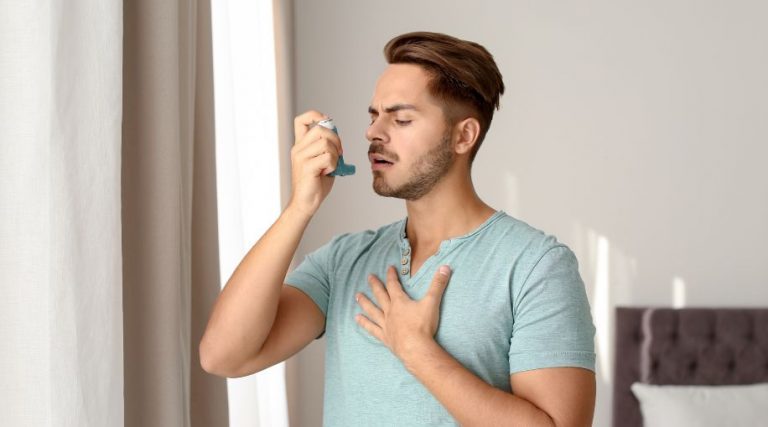Ensuring Your Mental Health Comes First
Post-Traumatic Stress Disorder (PTSD) is a mental health condition that may develop after experiencing or witnessing a traumatic event. Symptoms can be severe and long-lasting, impacting the individual's daily life and routines. It’s essential to know the signs and symptoms of PTSD to help recognize it and reduce the stigma around it. Keep reading to learn the signs of PTSD and more.
Signs and Symptoms
Symptoms of PTSD are grouped into four types:
1. Intrusive Memories
Intrusive thoughts and memories are when the individual experiences recurrent, unwanted and distressing memories of the traumatic event. Things to look for include:
- Recurring nightmares.
- Flashbacks of the event.
- Extreme distress upon being reminded of an event.
2. Avoidance
Avoidance generally refers to the individual avoiding activities, places and people that remind them of a traumatic event. Things to look for include:
- Unwillingness to discuss or think about the event.
- Unwillingness to see people, go to places or do activities that might remind them of the event.
3. Negative Thinking and Mood Swings
It may present a new unwillingness to go to certain places or do certain activities; this can be hard to recognize in others, but warning signs include:
- Hopelessness about the future.
- Feeling detached or numb.
- No longer enjoying activities that used to bring joy.
- Difficulty experiencing positive emotions.
4. Hyperarousal
Hyperarousal is when an individual feels constantly on edge. Things to look for include:
- Being easily startled.
- Consistent difficulty sleeping.
- Difficulty concentrating.
- Irritability.
- Overwhelming guilt.
If you notice any of these symptoms in yourself or a loved one, it may be time to seek professional help. If the symptoms persist for more than a month, then consider contacting a doctor for assessment and treatment. Treatment for PTSD can significantly improve quality of life and, in extreme cases, even save a life.
The exact numbers are unknown because some people do not seek treatment, but estimates are that around 7% of the US population will experience PTSD in their lives. Occurrence rates in certain areas of the population are higher, especially military and first responders, but anyone can develop PTSD.
Related Search Topics (Ads)
Residential Treatment and Outpatient Treatment Centers
Residential treatment centers offer comprehensive care for people suffering from PTSD. These are 24-hour care facilities that provide medical and psychological support, in a structured and therapeutic environment. Residential treatment is designed for individuals with severe PTSD symptoms that require continual and intensive care.
Outpatient treatment centers offer individual and group therapy sessions for individuals with PTSD. These centers provide proven treatments such as cognitive-behavioral and exposure therapy and newer and lesser-known treatments like eye movement desensitization and reprocessing (EMDR). Outpatient treatment can help people with mild to moderate PTSD who can otherwise function in their daily lives.
Different Types of Treatments
Cognitive-behavioral therapy (CBT) is a widely used treatment for PTSD. CBT focuses on teaching the patient to identify negative thoughts and give them tools to break these negative thoughts and behavioral patterns. A focus is placed on treating thoughts and reactions as information that can be used to make choices with better awareness.
Exposure therapy is another effective treatment for PTSD, where the individual is gradually exposed to the trauma in a safe and controlled environment, reducing the fear and anxiety associated with the traumatic event.
Eye Movement Desensitization and Reprocessing (EMDR) is a newer type of therapy that is not yet widely used. It is meant to help the individual reprocess traumatic memories by following the therapist's hand movements. In very simple terms, the distraction may help the patient more easily process the memories over time.
Medication can be used to manage the symptoms of PTSD. Antidepressants such as selective serotonin reuptake inhibitors (SSRIs) and tricyclic antidepressants (TCAs) can be used to manage depression, anxiety and sleep disturbances associated with PTSD. Anti-anxiety medications such as benzodiazepines can be used to manage hyperarousal symptoms.
What to do if You See Symptoms
If you think you or someone you know may have PTSD, especially in the case of suicidal thoughts, you must seek help. There are steps you can take and resources available for anyone who may be suffering:
- Reach out to a close friend or loved one; a support network can be instrumental in recovery.
- Contact a spiritual leader or a trusted member of your social community.
- Make an appointment with your doctor or a mental health professional.
- In the case of suicidal thoughts, a crisis lifeline is available in the U.S.; call or text 988 to connect with mental health professionals.
- If you or someone else are having a medical emergency, dial 911.

